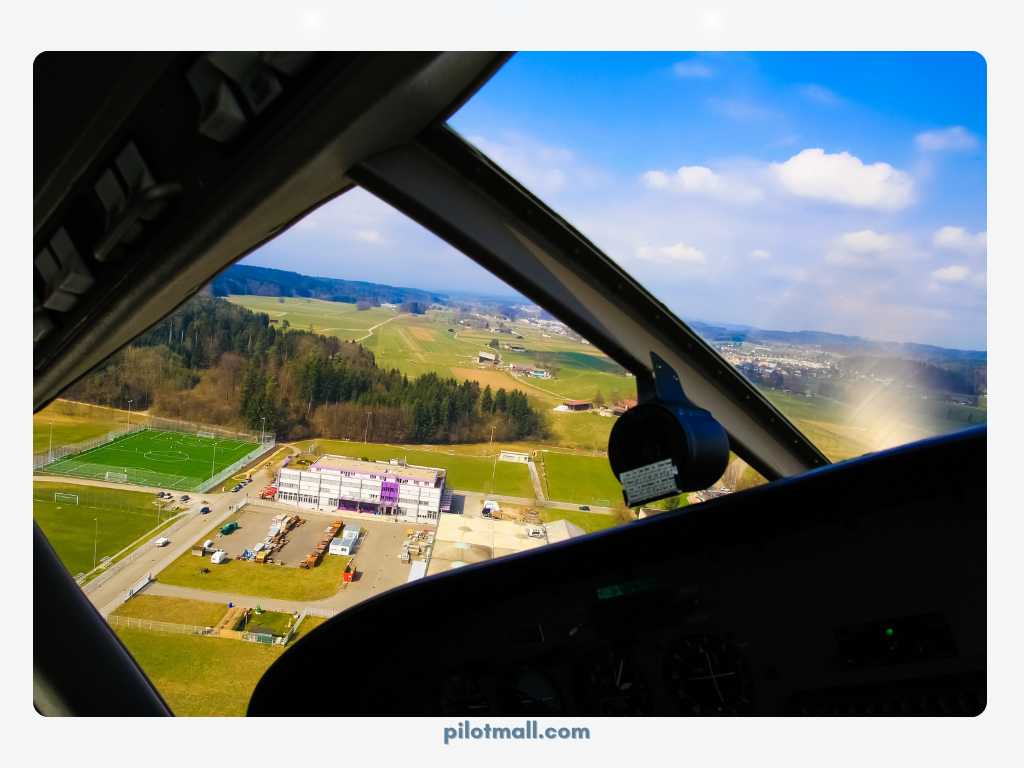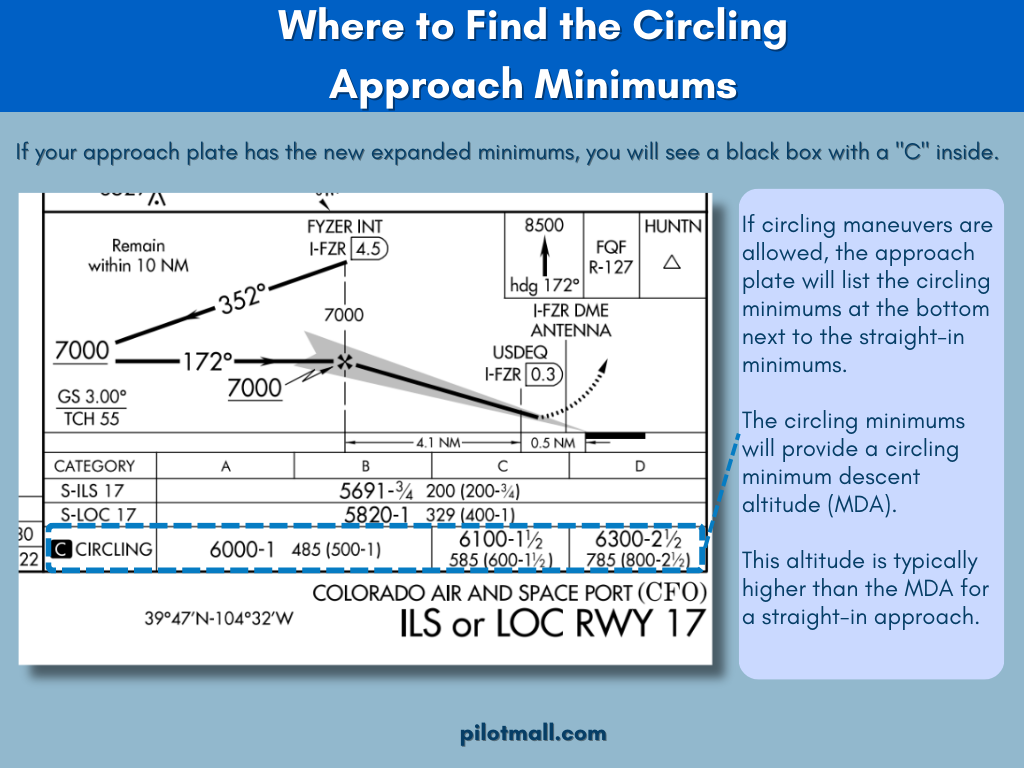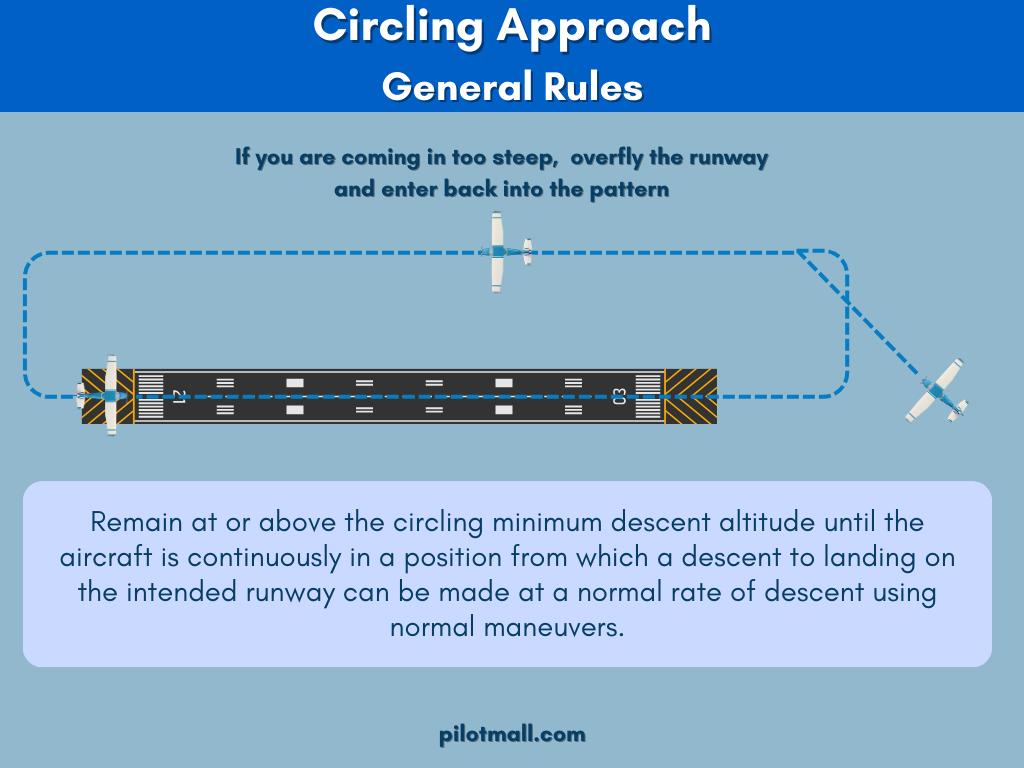Circling Approach: How to Accomplish It and What is it?
When we visualize our landings, we usually picture ourselves aligned with the runway centerline as we fly the final approach. Most of the time, that is exactly what the reality looks like, but what happens when we are flying an instrument approach and that approach is not aligned with the runway we wish to land on or conditions do not permit us to land on the aligned runway? Now what can we do? The solution is to execute a circling approach.
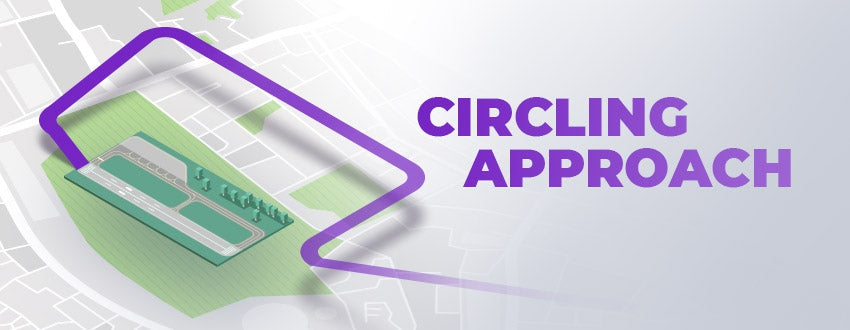
When we visualize our landings, we usually picture ourselves aligned with the runway centerline as we fly the final approach.
Most of the time, that is exactly what the reality looks like, but what happens when we are flying instrument approaches and the approach is not aligned with the runway we wish to land on or conditions do not permit us to land on the aligned runway?
Now what can we do? The solution is to execute a circling approach.
What is a circling approach?
A circling approach is a type of landing maneuver that pilots use to align their aircraft with the desired runway following an instrument approach in cases when an instrument approach straight-in landing is impossible or undesirable.
This maneuver is often necessary due to factors such as navigation aid limitations and weather conditions.
The need for a circling approach happens in two cases: when the final approach course is not aligned with the runway, and when the ILS approach is aligned to a runway other than the one the pilot wishes to land on.
An approach that appears almost straight-in can also be classified as circling if your final approach course is not within 30-degrees of the extended runway centerline, if the final approach course crosses the centerline, or if the final descent gradient is more than 400 feet per nautical mile.
Circling approaches are done only if a straight-in approach is not an option. The FAA’s Instrument Procedures Handbook warns that “circling approaches are one of the most challenging flight maneuvers conducted in the NAS,” underscoring the demanding nature of these maneuvers, especially under varying weather conditions.
Pilots must carefully consider instrument approach procedures, navigation aid alignment, and prevailing weather conditions to execute circling approaches safely and effectively.
How do you fly a circling approach?
Before deciding to fly a circling approach, check your instrument approach plate. If circling maneuvers are allowed, the approach plate will list the circling minimums at the bottom next to the straight-in minimums.
The circling minimums will provide a circling minimum descent altitude (MDA). This altitude is typically higher than the MDA for a straight-in approach.
Airports that allow circling approaches will have a designated area of airspace that guarantees a minimum of a 300’ obstacle clearance protection area. The circling approach area is plotted with arcs drawn a specified distance from the end of each runway.
The arcs connect to form a circle that marks the boundaries of the circling approach area. Standard circling minimums used a circling radius (distance from the center of the airfield to the edge of the circling approach area) that was unique to each approach category but did not take airport elevation into account.
Unfortunately, this did not account for bank angle limits, higher true airspeeds found at high altitude airports, or the impact of wind on a circle.
Therefore, the FAA has been rolling out expanded circling minimums since 2012. Any approach that is new or has been revised since 2012 uses the expanded circling minimums which are designated on approach plates by a black box with a “C” in it to the left of the circling minimums line.
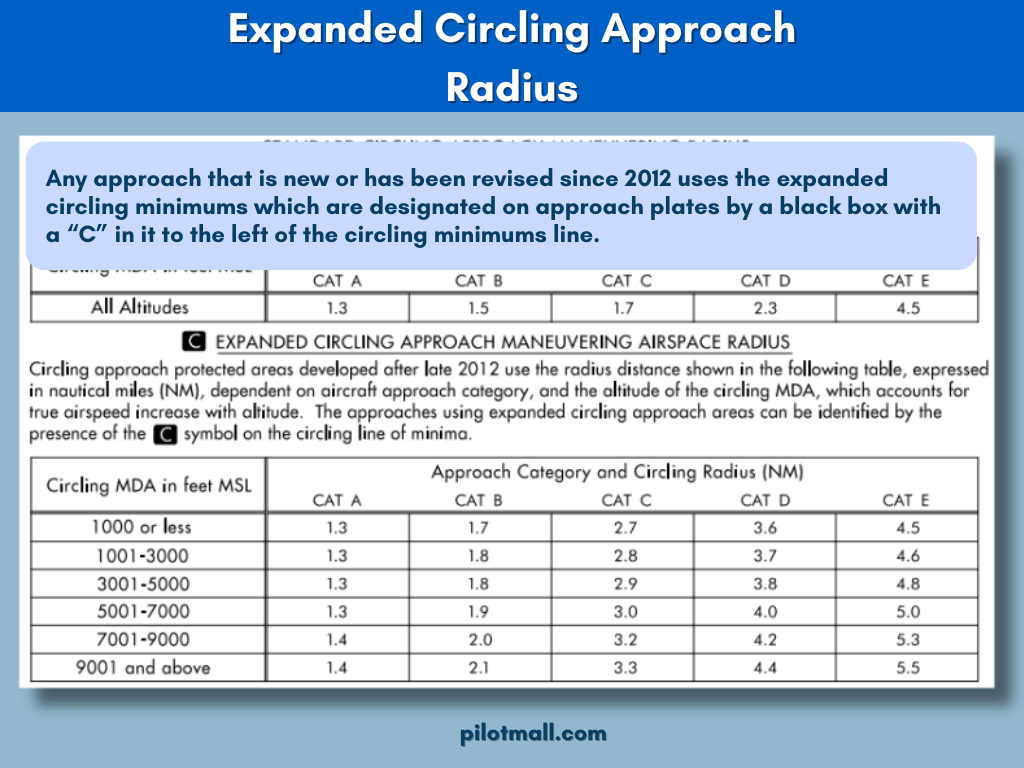
When you see this, you know that the circling radius has been adjusted for both the approach category and altitude of the circling MDA. This means your margins are greater.
Once you have established that a circling approach is allowed at the airfield you are going to land at, and you know your minimums, familiarize yourself with the local circling instructions and patterns.
The next step is to get official clearance to perform the maneuver if you will be landing within controlled airspace. This request is first made with approach control.
Contact approach control and provide your standard information including callsign and location. Advise that you have a request. When the controller asks for your request, indicate what approach you wish to make and which runway you intend to circle. ATC will either confirm your request or provide you a modification that they can approve.
When you make the handoff from approach control to tower, it is good practice to make the same request to tower to confirm.
A readback of their instructions can serve as a safety check if the clearance you receive back is not what you expected, and you want to confirm understanding.
Once permission has been granted, follow ATC instructions if given for circling direction. Generally, unless directed otherwise, you will maneuver on the shortest path to the base or the downwind leg using standard left turns.
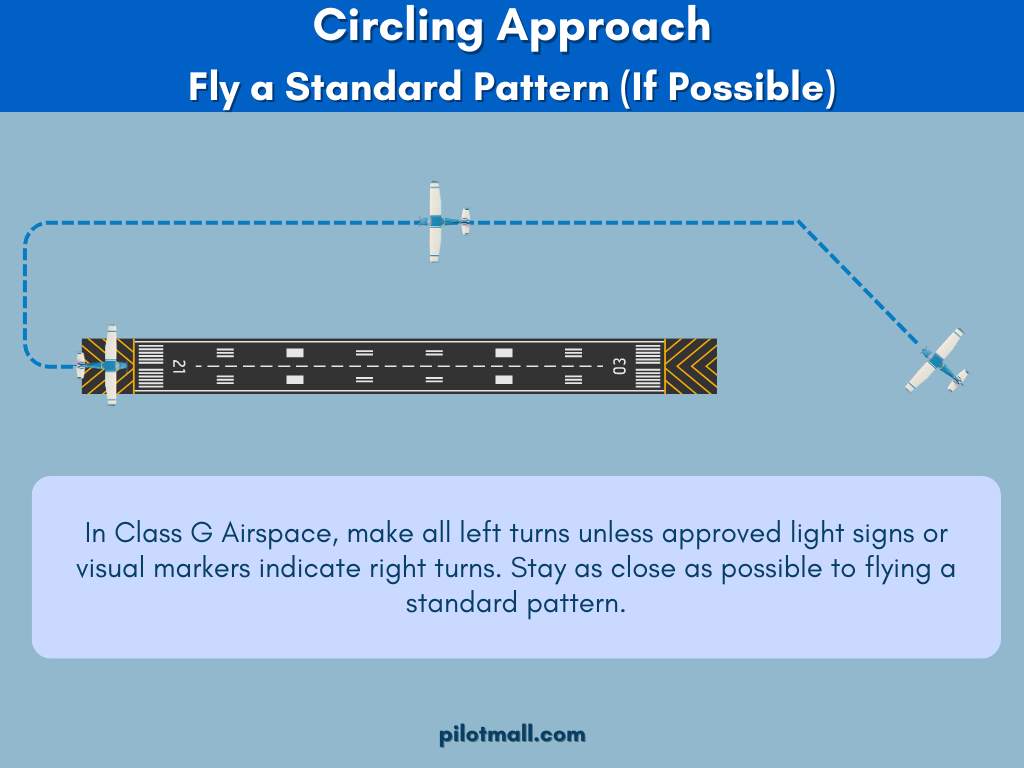
In Class G Airspace, make all left turns unless approved light signs or visual markers indicate right turns. Stay as close as possible to flying a standard pattern.
There are multiple circling techniques that you can use depending on your relative position to the runway once you break through the clouds and have it in sight. If you see the runway early, you may be able to make your turn to set up a base leg.
Other times you will need to fly over and come back around. There are no restrictions on overflying the runways or airport. In fact, at a Class G airport, a preliminary flyover to assess conditions and signage may be helpful.
Remain within the circling visibility minimums throughout the circling approach until you are continuously in a position from which a normal descent rate to landing on the intended runway can be made using normal maneuvering.
As you prepare to descend from your circling minimum altitude, remember to do a GUMPS check. Complete the remainder of your landing procedure as you normally would.
If your reason for doing a circular approach is that the straight-in final is too steep, the smoothest and most natural way to fly the approach is to overfly the runway, and then enter the pattern so you can set up for a more normal landing.
What are the general rules regarding circling approaches?
As with a standard IFR straight-in minimum descent altitude (MDA), pilots flying a circling approach should remain at or above the circling minimum descent altitude until the aircraft is continuously in a position from which a descent to landing on the intended runway can be made at a normal rate of descent using normal maneuvers.
Standard IFR visibility rules also apply, so if visual reference is lost during the circling to land maneuver, the pilot must call a missed approach and execute a go around.
Maintain standard aircraft spacing and keep your circling approach maneuvers as similar to a standard traffic pattern as possible. Stay alert to obstacles.
Always have both your landing and your missed approach procedures planned out in advance.
Take Away
Flying a circular approach can be intimidating at first and does come with risk due to low altitude, low airspeed maneuvering. Some of the main things instrument pilots should remember are to fly the approach as similar as possible to the traffic pattern and to stay alert for obstacle clearance levels. If you are studying for your IFR ask your flight instructor about circling approaches as part of your training for the instrument approach procedure.
When summarizing circling approaches, the FAR AIM says,
“Pilots must use sound judgment, have an in-depth knowledge of their capabilities, and fully understand the aircraft performance to determine the exact circling maneuver since weather, unique airport design, and the aircraft position, altitude, and airspeed must all be considered.”
Want to learn about more flight maneuvers?
Our guides are designed to help student pilots become professional pilots and for private pilots to brush up on their knowledge and skills.
-
How To Fly Turns Around A Point (Complete Guide + Lesson Plan)
-
The Chandelle Maneuver: What it is and Why You Should Learn to Fly it
Did you find this article helpful?
Do you think we missed anything important? Let us know in the comments below!























